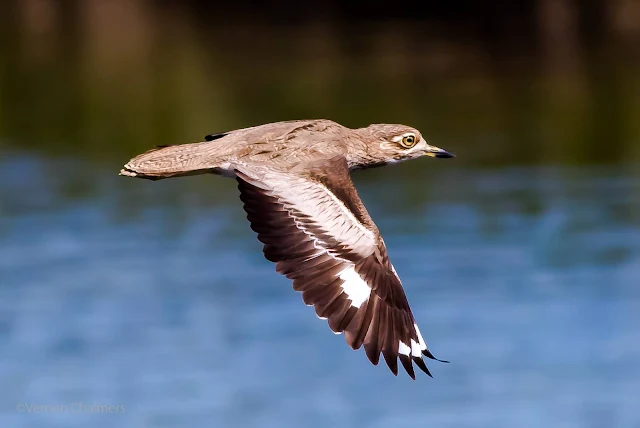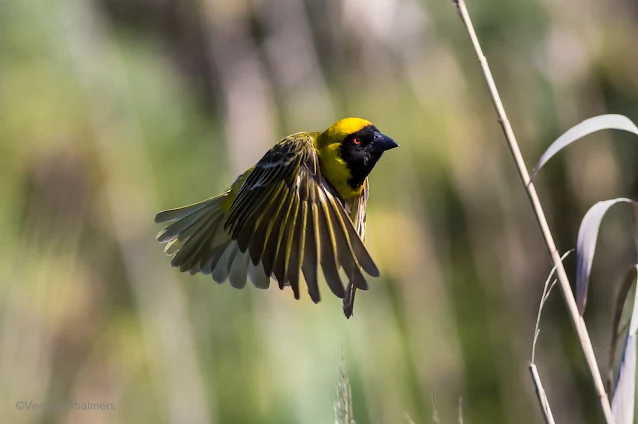Canon EF 400mm f/5.6L USM Prime Lens (No Zoom and No IS)
 |
| Canon EOS 7D Mark II / EF 400mm f/5.6L USM Prime Lens |
'Super Fast Autofocus on Canon EOS 7D Mark II'
I was recently asked for my opinion on an affordable, light and reasonably sharp 300mm or 400mm prime lens (for Birds in Flight and some wildlife photography) by one of my Birds in Flight Photography Cape Town workshop delegates.
The workshop delegate is a Nikon D500 user / photographer and although I could not comment directly towards her requirement for a Nikon 300mm or 400mm prime lens I shared with her my own Canon EF 300mm / EF 400mm prime lens decision-making process (from a few years ago).
My response (edited for the website with more content and context for assisting other / new Canon Birds in Flight photographers as well).
I use the Canon EF 400mm f./5.6L USM lens for my Birds in Flight photography at Woodbridge Island Cape Town. A cost-effective Canon EF 400mm prime lens with no Image Stabilization (IS), with very fast Autofocus (AF) and surprisingly light for carrying around for long shooting sessions (up to three to four hours at times). A simple and effective design with many good reviews over the years.
Bird Photography with Canon EOS 6D Mark II / EF 400mm f/5.6L USM Lens
Canon EF 400mm f/5.6L USM Prime Lens Key Features / Specifications
I use the Canon EF 400mm f./5.6L USM lens for my Birds in Flight photography at Woodbridge Island Cape Town. A cost-effective Canon EF 400mm prime lens with no Image Stabilization (IS), with very fast Autofocus (AF) and surprisingly light for carrying around for long shooting sessions (up to three to four hours at times). A simple and effective design with many good reviews over the years.
Bird Photography with Canon EOS 6D Mark II / EF 400mm f/5.6L USM Lens
Canon EF 400mm f/5.6L USM Prime Lens Key Features / Specifications
"The Canon EF 400mm f/5.6L USM is a highly regarded telephoto prime lens, especially popular among wildlife and sports photographers.
Here are some of its key features:
- Optical Quality: It includes one Super UD (Ultra-low Dispersion) element and one UD element, which help to reduce chromatic aberrations and produce sharp, high-contrast images 1 2.
- Build and Design: The lens is part of Canon’s L-series, known for its robust build quality. It features a built-in lens hood and a detachable tripod mount 2 3.
- Autofocus: Equipped with a Ring-type Ultrasonic Motor (USM), it offers fast and quiet autofocus. It also supports full-time manual focusing 1 3.
- Aperture: The lens has an 8-blade aperture, which contributes to a pleasing bokeh (background blur)1.
- Weight and Size: Despite its solid build, it is relatively lightweight at 1,250 grams (2.76 lbs) and measures 257 mm (10.1 inches) in length 2.
- Minimum Focusing Distance: The lens can focus as close as 3.5 meters (11.5 feet), which is quite good for a lens of this focal length 2.
- Lack of Image Stabilization: One notable absence is image stabilization, which means it requires good lighting conditions or a steady hand/tripod for sharp images 1.
This lens is particularly favored for bird photography due to its reach and image quality." (Microsoft Copilot)
 |
| Canon EF 400mm f/5.6L USM Lens for Birds in Flight Photography |
Canon EF 400mm f/5.6L USM Lens: Professional / Consumer Reviews
This lens is exclusively paired with my Canon EOS 7D Mark II and I'm satisfied with the all-round AF performance, sharpness and mobility (paired with the APS-C / Crop Canon body).
This lens is exclusively paired with my Canon EOS 7D Mark II and I'm satisfied with the all-round AF performance, sharpness and mobility (paired with the APS-C / Crop Canon body).
 |
| Canon EOS 7D Mark II / EF 400mm f/5.6L USM Prime Lens |
The Canon EF 400mm f/5.6L USM lens performs very well with the Canon EOS 700D, Canon EOS 70D, Canon 7D Mark II and the Canon EOS 6D (ito my own long term evaluation).
I'm of opinion that the AF performance is slightly faster when compared to the Canon EF 100-400mm f/4.5-5.6L IS II USM zoom lens of which I have tested extensively on both the Canon EOS 7D Mark II and Canon EOS 80D in exactly the same shooting environment.
Not bad for a Canon Super Telephoto lens that was designed / released in 1993.
Not bad for a Canon Super Telephoto lens that was designed / released in 1993.
I did not consider the Canon EF 100-400mm lens options as I already have the Canon EF 70-300mm f/4-5.6L IS USM lens - a lens that in itself is very fast and sharp and offers a great zoom range when required.
My original Canon prime lens decision-making lens selection
When I originally decided on a birds in flight lens I looked at three prime options:
- Canon EF 300mm f/4L IS USM lens
- Canon EF 300mm f/2.8L IS II USM lens
- Canon EF 400mm f/5.6L USM lens
Canon EF 300mm f/4L IS USM prime lens
I decided the 300mm f/4 (with image stabilization) was a tad short and not really optimized with a tele-converter on the Canon bodies at the time. With a tele-converer the reach is good - 300 x 1.4 - 420mm, but the AF would be a tad slower at f/5.6 for birds in flight (and I was concerned about the image quality when paired with the converter). And I already have a reasonably fast and sharp 70-300mm zoom. I have seen some great images from this lens and it was a serious consideration for me, but personally don’t really like shooting with a converter on a crop body i.e 7D Mark II.
 |
| Canon EOS 6D / EF 300mm f/2.8L IS II USM prime Lens |
Canon EF 300mm f/2.8L IS II USM prime lens
The EF 300mm f/2.8L IS II USM lens (with image stabilization) at 3x the price was not something I could justify from a cost / benefit perspective, I tested it, very good and at f/4 (without converter). With the 1.4 converter the lens would probably be just as 'fast' at f/5.6 (on the EOS 7D Mark II), but an expensive option for birds in flight. Very sharp and not that heavy.
I've deliberately tested it on my Canon EOS 6D (Full Frame) at f/4 in the same shooting environment I use the Canon EF 400mm f/4 USM lens. A high-end professional Canon super telephoto lens that is comfortable on both APS-C and Full Frame bodies (with / without the 1.4x / 2x tele-converters), just a tad expensive and not convinced it will justify the price / value / performance ratio in my Birds in Flight photography workflow and shooting at my Woodbridge Island, Cape Town shooting environment. Birds in Flight images with the EF 300mm f/2.8L IS II USM lens
 |
| Canon EOS 7D Mark II / EF 400mm f/5.6L USM Lens |
Canon EF 400mm f/5.6L USM lens
I researched this lens for three months in terms of the following criteria:
- For Birds in Flight photography only
- 400mm focal length for pairing with APS-C body
- Autofocus speed and image quality
- Weight (mobility for carrying long periods)
- Cost of ownership (Budget / ROI)
From the first morning I've added this lens still on my Canon EOS 700D I knew it was the correct decision. It ticked all the researched criteria boxes and although I've added a few newer Canon EOS bodies to my bag this is still my lens of choice for Birds in Flight photography. Its not a f/2.8 300mm or 400mm lens, but with enough good Cape Town light I am still without any doubt that this lens will perform very well against the more expensive Canon Super Telephoto options.
My training studio and home office apartments are literally on the doorstep of my shooting environment at Woodbridge Island and have a birds view of the the lagoon, sun and wind speed before venturing down for a shoot.
Canon EF 400mm f/5.6L USM lens Release Date
The Canon EF 400mm f/5.6L USM lens was released in May 1993 and as far as I know somewhat before Canon's IS implementation (according to Canon 1995). It became a very popular lens for bird / birds in flight photographers mainly due to low cost, light weight, image quality and fast Autofocus.
Canon EF 400mm f/5.6L USM lens Release Date
The Canon EF 400mm f/5.6L USM lens was released in May 1993 and as far as I know somewhat before Canon's IS implementation (according to Canon 1995). It became a very popular lens for bird / birds in flight photographers mainly due to low cost, light weight, image quality and fast Autofocus.
Canon EOS 7D Mark II - Birds in Flight Photo Gallery
Canon EOS 7D Mark II - Birds in Flight Photo Gallery
Starting out with Birds in Flight Photography Cape Town
Starting out with Birds in Flight Photography Cape Town
Two Canon 400mm Lens Options for Birds in Flight Photography
Two Canon 400mm Lens Options for Birds in Flight Photography
Canon EOS Setup and Tips For Birds in Flight Photography
Canon EOS Setup and Tips For Birds in Flight Photography
Tracking Variables for Improved Birds in Flight Photography
Tracking Variables for Improved Birds in Flight Photography
Birds in Flight Photography Cape Town
Birds in Flight Photography Cape Town
Starting out with Birds in Flight Photography Cape Town
Starting out with Birds in Flight Photography Cape Town
Two Canon 400mm Lens Options for Birds in Flight Photography
Two Canon 400mm Lens Options for Birds in Flight Photography
Canon EOS Setup and Tips For Birds in Flight Photography
Canon EOS Setup and Tips For Birds in Flight Photography
Tracking Variables for Improved Birds in Flight Photography
Tracking Variables for Improved Birds in Flight Photography
Birds in Flight Photography Cape Town
Birds in Flight Photography Cape Town
Sample images with two Canon zoom lenses
Have a look at Birds in Flight Photography Cape Town with the Canon EF 100-400mm f/4.5-5.6L IS II USM lens (paired with Canon EOS 7D Mark II) and the Canon EF 70-300mm f/4-5.6L IS USM lens (paired with Canon EOS 70D).
© Vernon Chalmers Photography
© Vernon Chalmers Photography
 |
| Water thick-knee in Flight : Canon EOS 7D Mark II / EF 400mm f/5.6L USM Lens (Woodbridge Island - Cape Town) Canon Photography Training Milnerton Woodbridge Island | Kirstenbosch Garden |
